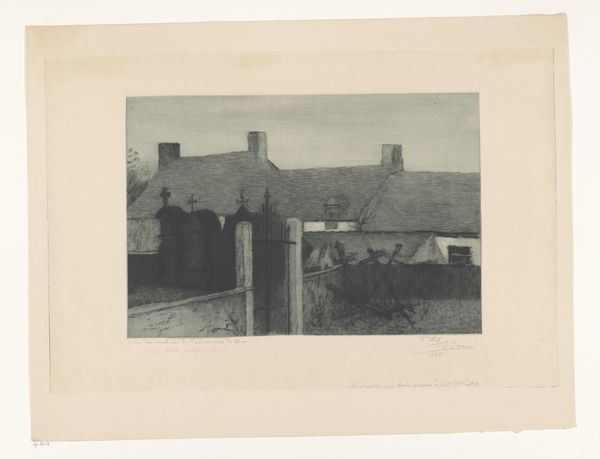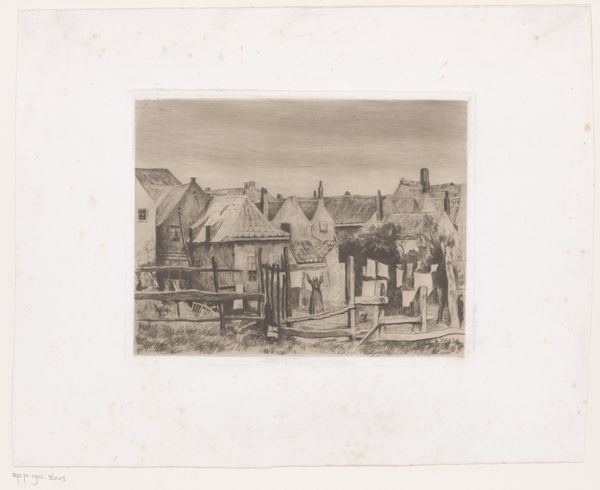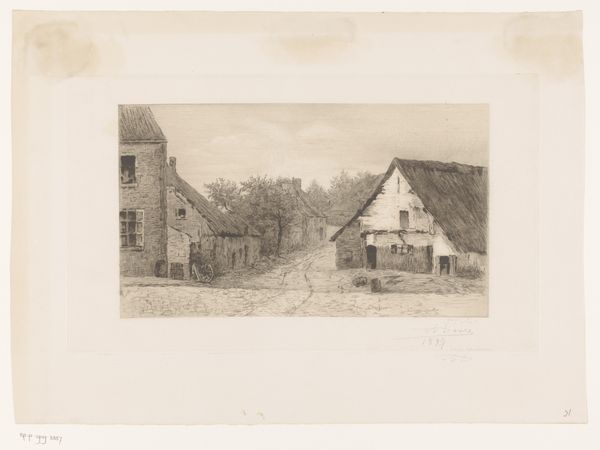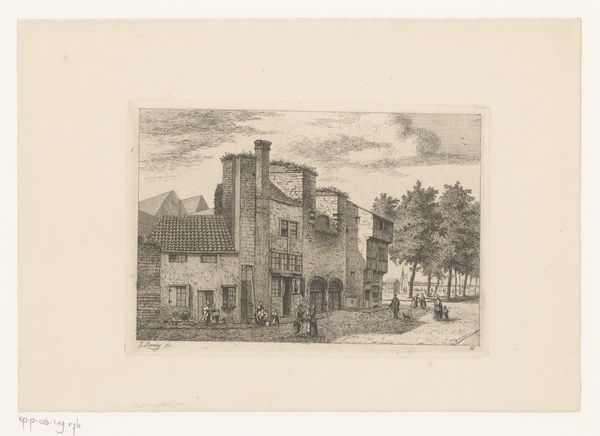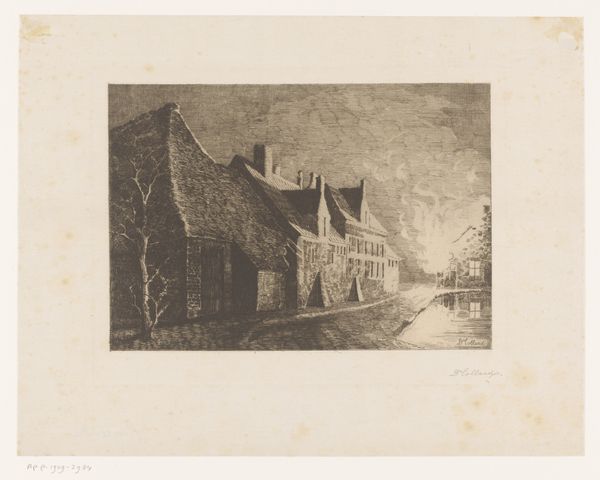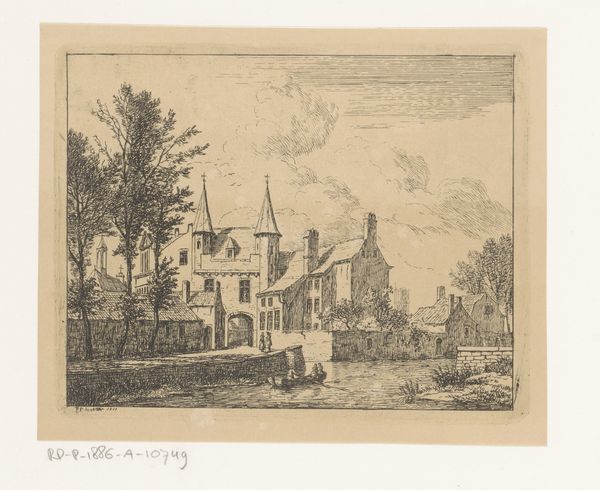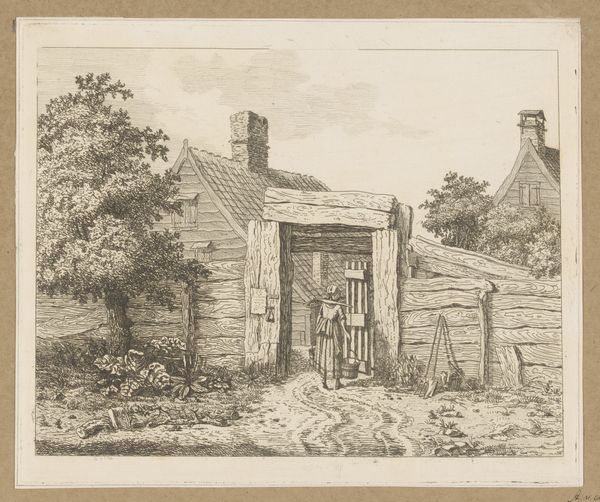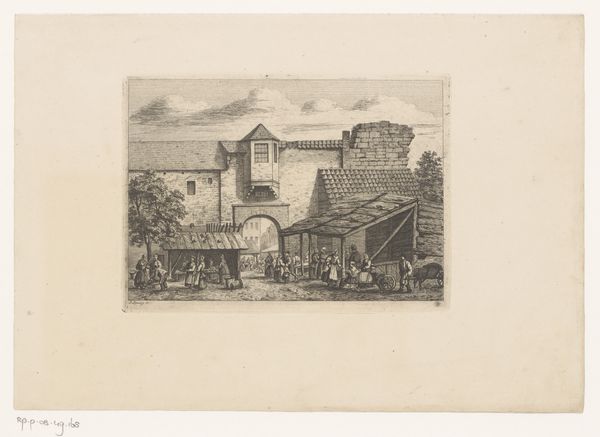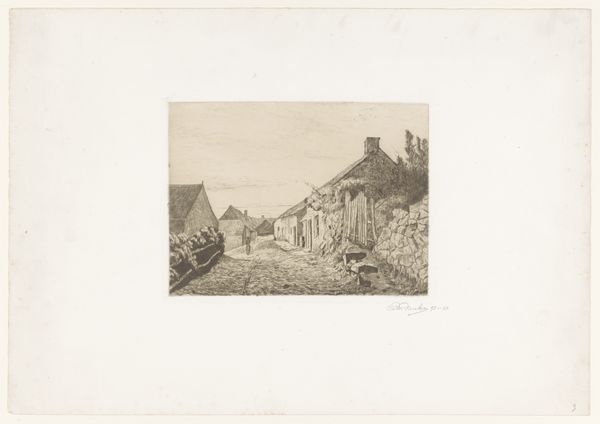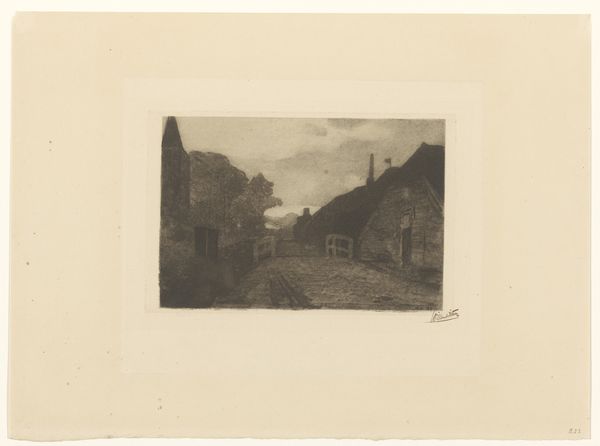
print, etching
# print
#
etching
#
landscape
Dimensions: height 394 mm, width 587 mm
Copyright: Rijks Museum: Open Domain
Editor: We’re looking at Auguste Danse's "Begraafplaats van Casteau," or "Cemetery of Casteau," an etching from 1895 housed at the Rijksmuseum. It has a very quiet, almost somber mood. I am curious about the repetitive mark-making, it's not as polished as other prints I have studied. What do you make of this work? Curator: I'm drawn to that materiality, actually. Think about the zinc or copper plate Danse used, the acid bath that ate away at the metal. The image isn't just *of* a place, it *is* a product of a specific industrial process, labor. How does that knowledge change your perception of it? Editor: I guess it makes me think about how many prints could be produced from that one plate. It’s not a unique object like a painting. Was Danse making a statement about the commodification of art by using a cemetery scene? Curator: That's a sharp question. Consider that Danse chose *etching*, a reproducible medium, to depict a burial ground. Graveyards in the 19th century, particularly near industrializing areas, were dealing with issues of space, sanitation, class distinctions even in death. This print could be read as participating in that social discourse through its means of production and its subject. Think about the kind of paper he would have chosen. Editor: So, the material choices – both the print medium and paper – are almost as significant as the image itself, grounding it in a specific time and place. I was focused on its somber mood but I missed the message about labor, production, and potentially social commentary about the materiality of death! Curator: Exactly. It's not just about *what* is depicted, but *how* it was made and what social forces were at play.
Comments
No comments
Be the first to comment and join the conversation on the ultimate creative platform.
